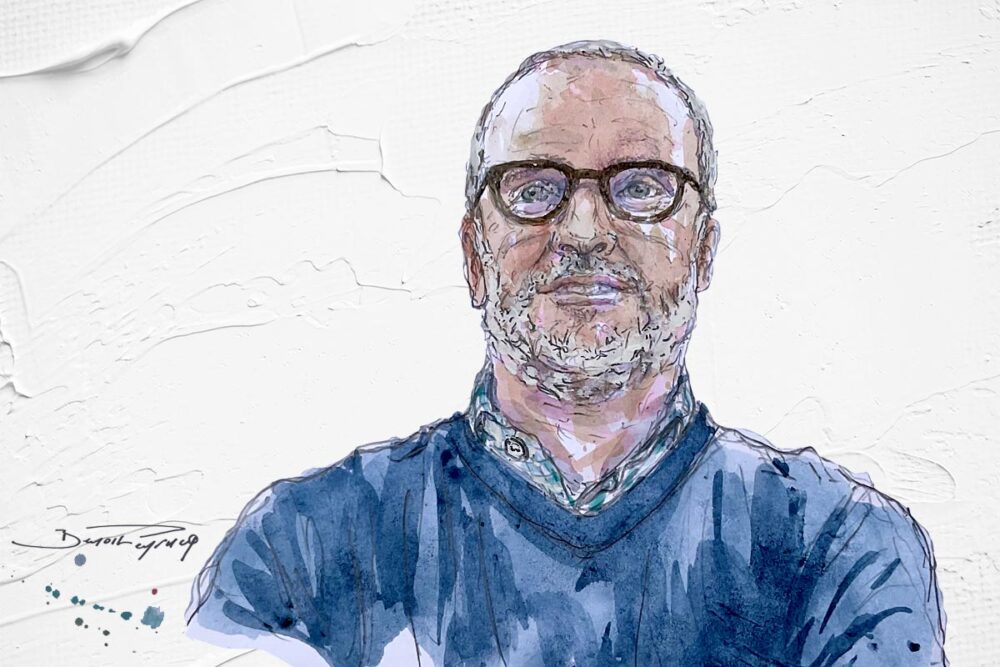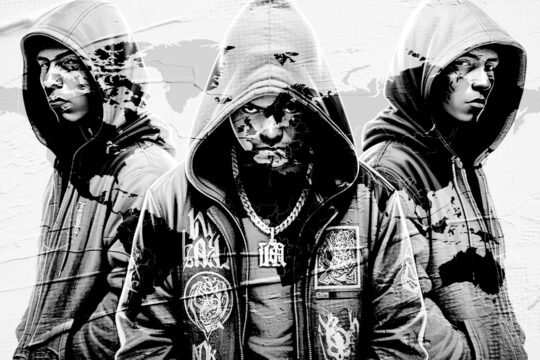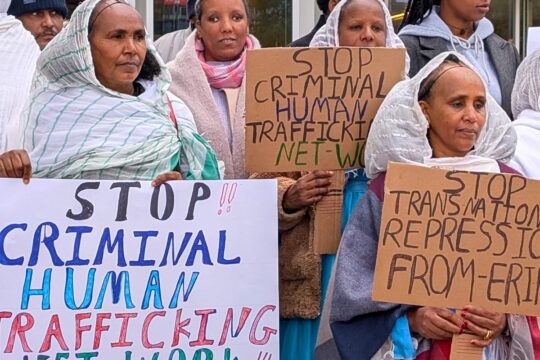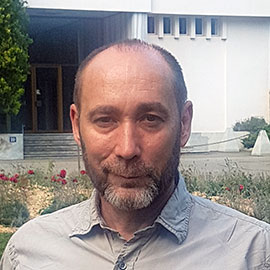JUSTICE INFO IN-DEPTH INTERVIEWS
Mark Freeman
Expert in political transitions and peace negotiations
In several parts of the world today, it is not war or dictatorship that are the main source of mass violence. It is mafias, gangs, cartels, bandits and pirates; and their modes of crime and violence span from extortion to kidnapping, murder, illegal mining, drugs and human trafficking. Think, for example, of Haiti, Mexico, Libya or northern Nigeria. Yet, transitional justice organisations and advocates are absent from the scene. Mark Freeman, executive director of the Institute for Integrated Transitions (IFIT), tells us why and what can be done.
In a comprehensive IFIT study published in 2021 on Negotiating with Violent Criminal Groups, you defined these groups as “encompassing mafias, gangs, pirates, cartels and similar groups.” What is it about these groups that leaves them off the transitional justice radar?
I can only offer a couple of hypotheses. One relates to paradigms and worldviews that we default to in transitional justice; specifically, the human rights paradigm that situates responsibilities for violations with the state, and not with non-state actors. It’s a paradigm that is baked into transitional justice which, as you know, originated as a set of ideas in the Latin American region in a period when a series of military juntas were overturned and democracy was restored.
Another common paradigm is that of armed conflict. If you look at most mapping of conflicts in the world, you won’t find many where criminal groups figure. In the frameworks that we have, whether legal or intellectual, violent conflict is associated with situations of armed hostilities with groups that would be defined and understood as combatants or militants. That goes not only for politically-motivated groups, but also for jihadist groups. In short, groups with a cause.
Note that, in both of those cases, criminal groups are side actors. They don’t enter into the paradigm. And so, for example, in those elaborate maps and indexes of conflicts around the world you won’t find the places that have the highest homicide rates, most of which are attributable to criminal groups. If you went to Mexico today – which has one of the world’s highest homicide rates – neither the world outside nor Mexicans themselves would say that there is an armed conflict. And there isn’t! But again, should that be an impediment to thinking about the possible application of transitional justice ideals and methods?
It’s treated as some kind of “side problem”. I could be wrong, but that’s my sense of why it’s such a blind spot.
What if the paradigm we need for today is a third category of transition: transitions from disorder to order?
And that leads to the paradox where this mass violence is not part of the transitional justice discourse, and not a field where international actors or NGOs consider it a priority to be involved?
Transitional justice still has that word at the front: transition. Conceptually and legally, we still default to the idea of facing legacies of mass abuse in order to achieve a transition, either to peace or to democracy. But what if the paradigm we need for today – looking at clear global trend lines such as the weakening of states and the growing power of non-state actors including criminal groups – is a third category of transition: transitions from disorder to order?
If that was a transition paradigm, the very first group you would probably be paying attention to would be criminal groups. Because in so many places, democracy and peace are something for the longer term. Where you’re standing right now is a place of state dysfunction and criminality. As such, maybe there is a third paradigm that we have to start to grapple with and articulate, and it may be along the lines that I mentioned: transitions from disorder to order.
Negotiating with criminal groups is a taboo subject. If they happened, they were denied.
In the IFIT study, you say that a central determinant of whether or how to negotiate with criminal groups is public sentiment. And we understand that when it comes to these groups, there is no sympathy or support in public opinion. Do you think this too explains why few actors want to move into this area?
I use the word taboo. Negotiating with criminal groups is a taboo subject. One of the great challenges of our research, in fact, was identifying actual cases of negotiation with these groups. Because if they happened, they were denied. The vast majority of cases are secret, never reaching the public light. And just that fact alone tells you a lot about the fear of public exposure of these kinds of negotiations.
But we also argue that there is a failure of imagination. From what we saw in the actual cases we studied, they didn’t turn out to be stories of failure. It was quite mixed. There were some very interesting and reasonably successful stories of negotiations. So we asked ourselves: are we thinking about these groups in the wrong way? We’re actually using boxes and paradigms that are limiting our imagination about the utility of negotiation.
Think of an analogy. Public sentiment was against the FARC [Revolutionary Armed Forces of Colombia]: 95% of the Colombian population detested, vilified, and rejected them in the most categorical terms. So I’m not sure public sentiment gets us to the explanation of why we don’t think about the option of negotiating with criminal groups. I mean, the United States negotiated with the Taliban…
But in the IFIT study you identify the Taliban as a militant group, and you argue that international actors generally understand why a government may choose to negotiate with the FARC or the Taliban. Because those are militant group whereas the groups we are talking about here, while there’s no relevant difference in the violent tactics they apply, are understood as primarily pursuing “profit, not revolution,” to use your own words.
Correct. And that’s the other part of the failure of imagination. We simply have difficulty imagining what exactly one would “negotiate toward” with a group that has no revolutionary or transformational objective. How does the negotiation end – what is the endgame?
It turns out that part of the answer is the following: if the group has a high level of internal identity and cohesion, that could be a building block for a negotiation aimed at reducing violence.
The larger point is that, the more we acknowledge the grim reality of criminal groups’ power, the more the paradigms will have to shift. They will stretch out of necessity because these groups are growing and the state is weakening in too many places. So whether transitional justice catches up now or later, it’s eventually going to happen. And the sooner it happens the better. Otherwise you are condemning yourself to irrelevance. We can’t be wedded to a set of paradigms for the landscape of yesterday. It doesn’t work.
If your only option in the place you live is between hell and one step above hell, and you can maybe get one step above hell through the negotiation of a ceasefire that is limited and imperfect and hard to monitor, you’ll take it.
You’re saying that when entering negotiations with these criminal groups in order to reduce violence, the endgame is going to partial and perhaps temporary. Is there a critical shift of expectations to accept?
Are we talking about a negotiation to reach a comprehensive agreement in which the criminal group transforms into something else and its members give up their arms? Or are we talking about a negotiation for a limited or partial settlement where they keep their arms and agree, for example, to not carry out certain kinds of violence in certain areas or for a fixed ceasefire period and so forth?
My view is that both kinds of negotiation can be absolutely legitimate. Because if your only option in the place you live is between hell and one step above hell, and you can maybe get one step above hell through the negotiation of a ceasefire that is limited and imperfect and hard to monitor, you’ll take it. And I think we should be careful to judge the people that would, because their alternative is often much worse in the absence of a negotiated deal, however limited or precarious it might be.
We supposedly believe these things in transitional justice: we say it is context first. Well, that’s the context of many people. These are the real choices for a lot of people in the world.
You examined two dozens of cases of negotiations intended to reduce or end widespread violence by or between violent criminal groups. Why do criminal groups actually negotiate, and why do governments or other actors negotiate with them?
You first have to know something about the objective that might orient your adversary as well as knowing what would be your own objectives. For criminal groups, there is a wide spectrum. At one extreme, it could be that the group wants to “get out of the game”, at least at the leadership level. In a context like that, they may wish to have some kind of legal leniency, very similar to what we see with politically-motivated groups. The big difference is that they are not going to become political parties. But in some cases, they can transform into cultural associations, for example; essentially unarmed groups that are be given a certain amount of recognition, dignity, and legal security.
At the opposite extreme, the criminal groups may be too powerful to negotiate anything more than minor qui pro quos. And let’s not forget an astonishing fact: some of their leaders are already in prison. There are very powerful criminal groups that are run from within prisons! So think about the implications of that for a second.
In any case, in places where criminal groups become very prevalent, there are multiple groups operating in what can be called a “criminal market”. As such, sometimes what they’re interested in is protection from rival groups, not from the state.
Unsurprisingly therefore, in those and other cases, it is usually not the government doing the negotiations. It will be aware of them, yes, and probably consulted on them too. Or sometimes there will be a very intentional outsourcing to third parties, since the government needs to be able to say “we’re not involved”.
Again, it’s a very wide range of potential actors and motivations. But as for the public interest objective, that’s easy: it is the reduction of criminal violence.
Bear in mind, there are lots of times where the state itself is complicit in the criminal activities, so communities have to advocate for themselves and/or identify someone who can negotiate.
What about the role of victims?
In our research, we looked at 25 cases of negotiation with criminal groups and what didn’t appear, except in one or two cases, are the victims. Victims are pretty absent. Governments and their agents were generally not negotiating on behalf of victims.
In the cases we saw, it was largely what I would call negotiation or mediation entrepreneurs who acted upon request or took it upon themselves to mount talks, usually out of a humanitarian impulse. Bear in mind, there are lots of times where the state itself is complicit in the criminal activities, so communities have to advocate for themselves and/or identify someone who can negotiate – a trusted journalist, a lawyer, a priest, anybody who can help improve the situation just a little bit.
But from what we could assess in our research, victims disappear afterwards. Agreements didn’t take much account of them. While there were a few cases involving apologies to victims, the kind of things we mainly associate with transitional justice – ideas around reparations, truth-telling mechanisms, and the whole repertoire – were missing… notwithstanding the fact that in most cases, it was a victim community that initiated the talks. They were the ones saying: “please help.”
Does it mean that in such situations we need to forget the traditional mechanisms of transitional justice because they’re not possible?
Maybe not. The argument we make in the paper is that if you’re going to sustainably reduce criminal violence in a particular society, it has to be accompanied by measures to improve institutions, to make them cleaner, stronger, better performing, more independent. At the same time – and that’s where the victims’ part comes in – even strengthening institutions isn’t enough because you also need to empower communities from the bottom up. It’s a different thing from reparations or truth-telling, it’s more of an empowerment logic. I don’t know if it’s the right way to think about what a victim-centred approach would mean, if we’re talking about transitioning from disorder to order. But maybe an empowerment logic is going to be more relevant.
If we take out the idea of transition, it’s hard to see what the argument would be for limiting the toolbox to truth, justice, reparations and reform, or even reconciliation. My instinct is that empowerment has to figure in that.
Is this also a reason why the whole field of transitional justice is not involved or not interested? Because they may say: “None of what we do in transitional justice is being done in this case, so it is not transitional justice, and that’s why we’re not there.” But you’re saying: yes, somehow transitional justice has something to offer. Can you clarify what?
In my conception of transitional justice, the central idea is about bringing a victim-centred -rather than merely perpetrator-centred - set of responses. If we then allow the argument that you can take the tools and ideas of transitional justice and apply them even without a transition being present, it seems to me that we have to look more expansively at what should be in that toolbox. Because if we take out the idea of transition, it’s hard to see what the argument would be for limiting the toolbox to truth, justice, reparations and reform, or even reconciliation. My instinct is that empowerment has to figure in that.
For those who want to say that transitional justice only kicks in when there’s a real prospect of a democratic or post-conflict transition, I think transitional justice is doomed to a pretty high level of irrelevance. For those who remain wedded to that – because they’re wedded to the prior idea that transitional justice is only triggered when you have a classic transition – there is not a lot of work you can do and not a lot of responses you can give to people and societies.
I am Canadian, and Canada has not been going through democratic or post-conflict transition in my lifetime, but we drew from the toolbox of transitional justice and set up a truth and reconciliation commission [on the legacy of the Indian Residential Schools sytem]. But like I say, I don’t think the toolbox needs to stop at truth, justice, reparation and so on. I wouldn’t understand that logic. It needs to be stretched further if you believe it’s a set of tools that can be applied to places both in transition and not in transition.
Here I go back to the earlier comment I made about the reality of so many societies today, which is that they are in a search to move from disorder to order. That is the only transition within their reach. They have to first get to order before they can get to anything else. And from that perspective I do think that for victims it would be empowerment tools and strategies that would become more central. It could still be called transitional justice in my way of thinking. But it certainly falls outside the toolbox of today.
You said we could more successfully negotiate with these criminal groups when they have internal identity and cohesion. But your report does say that it’s far more complicated when we deal with drug-trafficking organizations, which is significant. What’s the option there?
It’s counter-intuitive yet inherent to the logic of negotiation that part of what you’re trying to do is to empower your adversary. You would normally think that your only goal is to achieve as much benefit as you can for your side, but the reality of negotiation, including with criminal groups, is that you also have to create a runway for implementation by and with your adversary.
I do not argue that you should always negotiate with criminal groups, but you may not have many better choices. The key is to take a look at the group that you have, because maybe they don’t have the cohesion and identity you need in order to justify negotiating with them. It is happening currently in Colombia where there is a kind of de facto process of strengthening some of the smaller groups by giving them the capacity to negotiate, to become more cohesive, to foster for themselves an identity that they don’t have, in order to make them more capable to negotiate. It’s very risky but it’s not such a strange idea because it’s done all the time. It’s in the nature of negotiation. Your adversaries are building a runway for you too.
Let’s take examples. In the case of Colombia, how do we understand the place, or the lack thereof, of violent criminal gangs in the current large-scale transitional justice process?
There have been two major transitional justice processes over the last 20 years in Colombia. The first one with the paramilitaries, called the Peace and Justice process, that resulted from a negotiated agreement. And then there is of course the FARC agreement in 2016. Both have transitional justice mechanisms available and applicable to the groups that negotiated the deals.
But criminal groups in Colombia thus far have not successfully negotiated deals – although we do refer in our report to the case of a criminal group, the Clan del Golfo, that tried to paint itself as having political motivations in order to seek a negotiated deal. The other case is the cartel of Pablo Escobar. Even at his weakest, he had enough leverage to negotiate the scope of a prison term, the location and the conditions of the actual prison setting which he infamously decorated himself. But that was a very different time in the country; one Colombia's most famous novelist, Gabriel García Marquez, called a “biblical holocaust”. It was just one step above the inferno. And it didn’t have transitional justice.
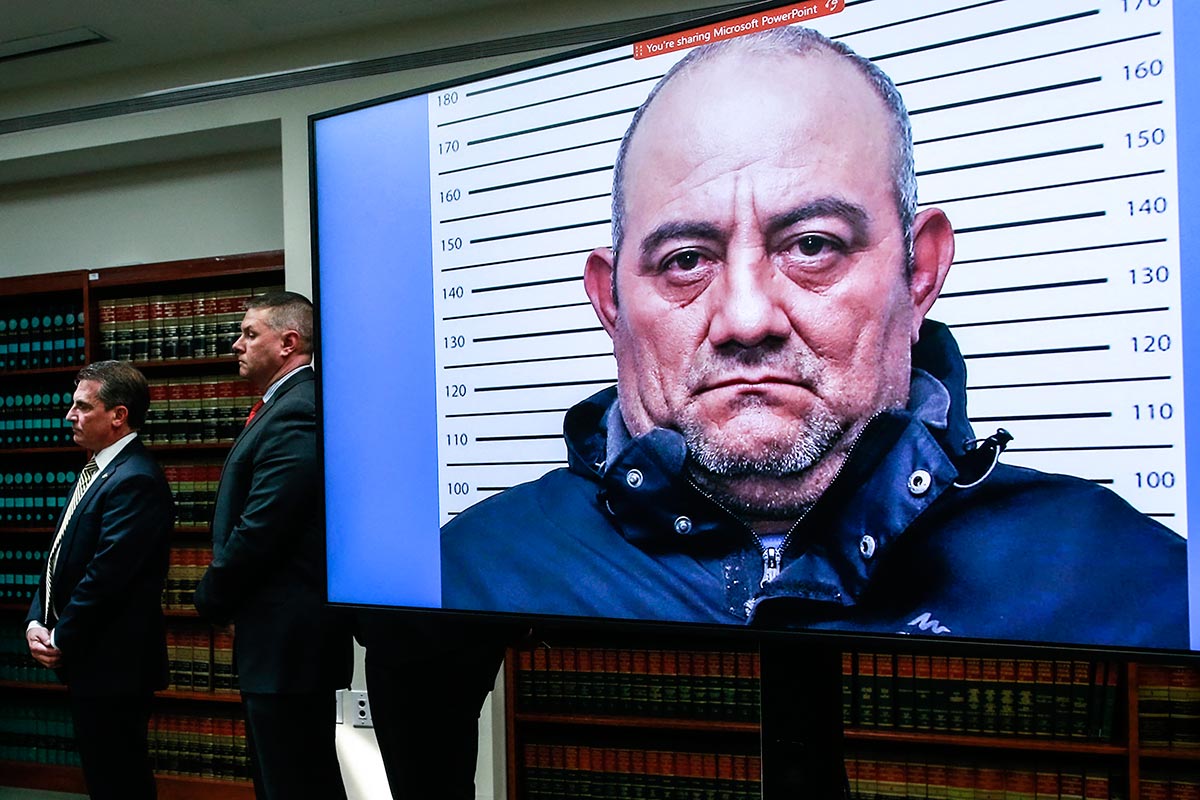
Your study pointed to Ecuador as a valuable, positive case. But today it is in a state of national emergency and even “internal armed conflict” with a staggering homicide rate of 46,5 out of 100 000. Why this failure?
I do not see anyone making the argument that today’s criminal violence – which is extreme and astonishing when you look at the homicide chart six or seven years ago – is in any way a consequence of the agreements reached with urban gangs under President Rafael Correa. There isn’t a strong connection. There are other factors, including the foreseen and forewarned arrival of powerful criminal groups from Colombia when the official armed conflict with the FARC ended. There were alerts given to the Ecuadorian government and my understanding is that the response was “we’re fine, we’ve always been fine”.
Criminal violence is like squeezing a balloon: you pressure it in one place and it moves to another.
Is there any lesson to draw from Mexico where tens of thousands of people are killed every year due to criminal violence?
I’ll share some of the observations and ideas from the work of our Mexican expert group. One is about understanding the nature of violence in Mexico. It’s a place that is not in armed conflict but has conditions that could resemble armed conflict. Two, it has what they call “clusterised” violence; there are pockets that are highly violent, others that have relatively low or little violence, and alternatively safe or dangerous roads in between them. There’s reportedly more than 300 different groups in operation, so the criminal market is highly fragmented. In short, it’s a place in which, depending where you are, you experience very different realities.
Then, arms: in the early 2000s there was a sudden and massive arrival of illegal arms from the United States into Mexico and you can trace the curve of organised criminal violence with it. Also, it’s a federal system and there are tons of different police departments, unlike Colombia that has a national police force. This diversity of institutional entry points is a kind of unintended gift to criminal groups that want to infiltrate the police.
As for the solutions, what we’ve been thinking about – and you’ll recognise this kind of thinking from transitional justice – is to speak to the people most affected, get their perspectives, what are the solutions that they see. But it’s going to be a long road and will require combining institutional strengthening and civic empowerment.
Right now there is no authority in Haiti that has either coercive power or negotiating power. All I can picture is a future negotiation process that produces a pact to reduce violence, not end it.
Do you have any comment on Haiti where an estimated 80% of the capital city is controlled by gangs? Should we negotiate with these groups? If so, who should initiate such talks?
This is where what we discussed before becomes relevant. Negotiate what: a transformative agreement where the gangs give up their arms? That could only be a very remote, long-term goal in Haiti. Negotiate some reduction of violence or some form of ceasefire where they remain in arms? Even that might be unrealistic.
Right now there is no authority in Haiti that has either coercive power or negotiating power. The imbalance is so great. But over a period of time maybe you’re producing the conditions for a negotiation through, among other things, a reformist security strategy.
Even then, however, all I can picture is a future negotiation process that produces a pact to reduce violence, not end it. The deal would be what people in the profession call “lipstick on a pig”. But that might be better than pure hell and disorder.
What about El Salvador? Almost 82,000 gang members have been arrested – that is 1% of the population. There are mass trials, with up to 900 defendants at once. And the homicide rate went from 103/100 000 inhabitants in 2015, down to 2,4 today. President Nayib Bukele is highly popular and has admiring leaders in the region. Isn’t he proof that a full armed response is what brings results?
The result is clearly favourable. I don’t see the argument for questioning the result: it’s a far safer place. But the question that everybody asks, I think rightly so, concerns the costs of the policy.
The majority of Salvadorians seem to agree with the cost…
Yes. But the majority aren’t paying the cost – the absence of due process, the horrendous conditions of prison, the sweeping arrests, etc. From a human rights perspective or a transitional justice perspective, the conversation is about the cost. To deny the result wouldn’t be serious. It’s just that the cost is immense.
Northern Nigeria is another hot spot of criminal groups controlling and terrorising large areas. Locals call them “bandits”. Any thoughts on this situation? Is it any different?
It’s generally the same phenomenon. We’re talking about groups that lack any objective political or transformational motive. In that respect – and here, the term “bandit” is very telling – it fits into the archetype we’re talking about. When people refer to them as bandits, they are making an implicit distinction with groups that are jihadist or something else.
These distinctions in characterisation about the nature of groups, even if they’re archetypes, are quite important. Because depending on the characterisation, a group can be placed on a black list or denied certain legal benefits or barred from negotiation. So you need these categories to formulate wise public policy and send useful signals to the different armed groups. We need to have a vocabulary and sense of the terrain of violence, especially when dealing with places where disorder and criminality are the rule rather than the exception.

Mark Freeman is the Founder and Executive Director of the Institute for Integrated Transitions (IFIT), a non-governmental peace-building organization. An expert in political transitions and high-level peace negotiations with more than 30 years of experience, Freeman has worked at the International Crisis Group and helped launch the International Center for Transitional Justice. Freeman is the co-author of Negotiating Transitional Justice (Cambridge, 2020), among a number of other publications.


